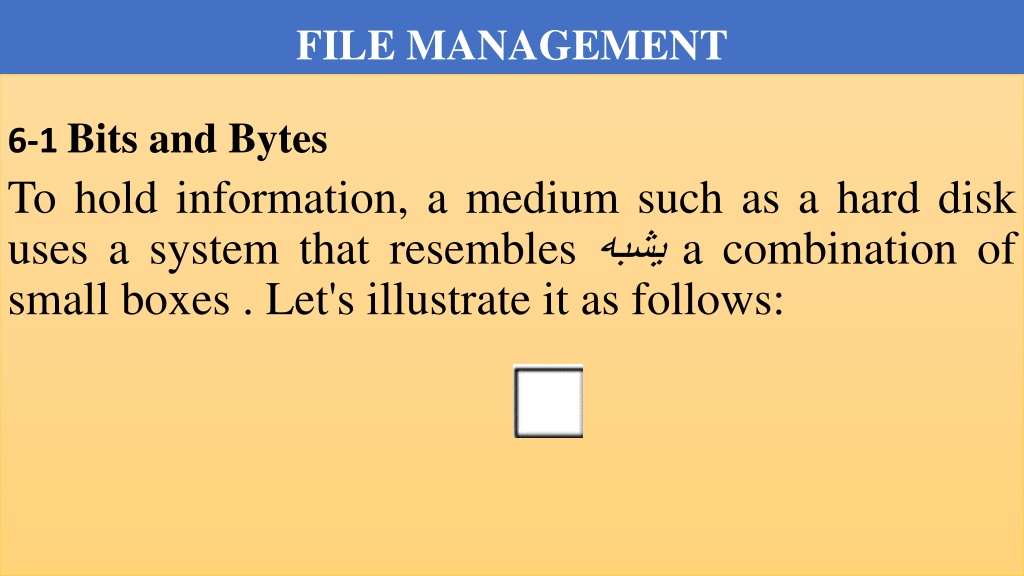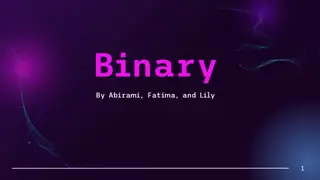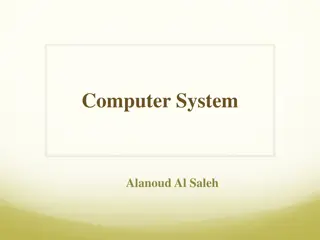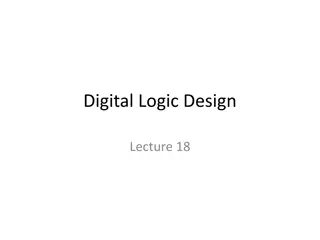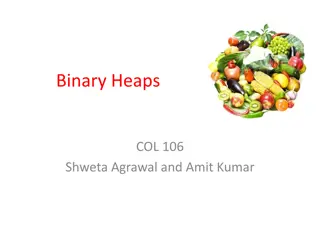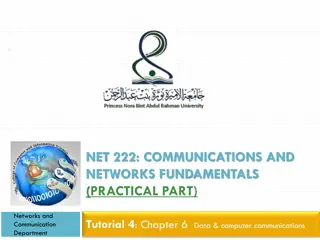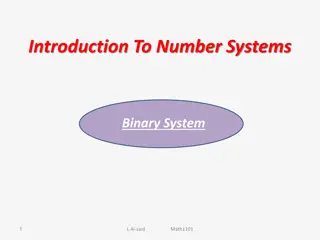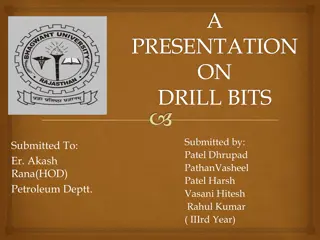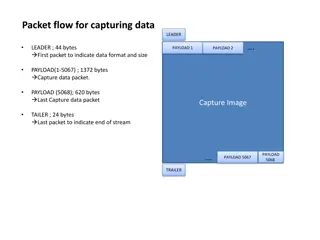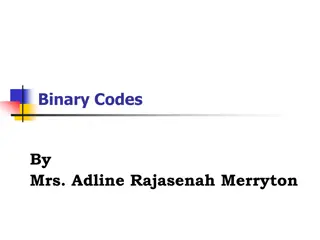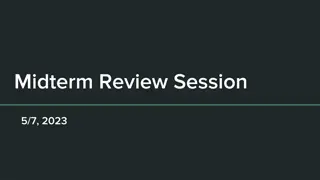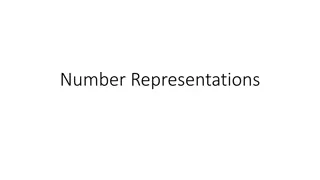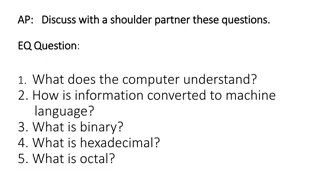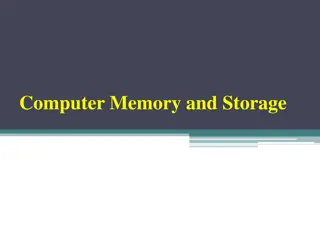Bits and Bytes: The Binary System Explained
In the world of file management, information is stored using bits and bytes represented by combinations of 0s and 1s. A binary digit, or bit, can be 0 or 1. Bytes consist of 8 bits, allowing for 256 possible combinations. Understanding this binary system is crucial for working with computers and data storage.
Download Presentation

Please find below an Image/Link to download the presentation.
The content on the website is provided AS IS for your information and personal use only. It may not be sold, licensed, or shared on other websites without obtaining consent from the author.If you encounter any issues during the download, it is possible that the publisher has removed the file from their server.
You are allowed to download the files provided on this website for personal or commercial use, subject to the condition that they are used lawfully. All files are the property of their respective owners.
The content on the website is provided AS IS for your information and personal use only. It may not be sold, licensed, or shared on other websites without obtaining consent from the author.
E N D
Presentation Transcript
FILE MANAGEMENT 6-1 Bits and Bytes To hold information, a medium such as a hard disk uses a system that resembles a combination of small boxes . Let's illustrate it as follows:
This box can hold only a small piece of information. It can only be either 0 or 1. When the box is empty, it holds a value of 0. When it is full, it holds a value of 1:
You can represent a piece of information with one of two states. This box used to represent a value is called a binary digit; in its abbreviated form, it is called a bit (for binary digit ).
This combinations: 0000, 0001, 0010, 0011, 0100, 0101, 0110, 0111, 1000, 1001, 1010, 1011, 1100, 1101, 1110, 1111 = 16 combinations. When using the decimal system, these combinations can be represented as 0, 1, 2, 3, 4, 5, 6, 7, 8, 9, 10, 11, 12, 13, 14, and 15. produces the following binary
This combination is also a system that the computer uses to count bits internally. This technique is valuable and allows you to always identify a number as a divider of 4. When all bits of a group of 4 are 0, the combination has the lowest value, which is 0000. Any of the other combinations has at least one 0 bit, except for the last one. When all bits are 1, this provides the highest value possible for a group of 4 bits. The lowest value, also considered the minimum value, can be represented as 0.
The maximum, can be expressed in decimal value as 24(2 represents the fact that there are two possible states: 0 and 1; 4 represents the fact that there are four possible combinations), which is 16. This produces 16 because 24= 16. highest value, also considered the
A combination of 8 consecutive bits is called a byte. The bits are counted from right to left starting at 0:
You can represent a byte using a combination of 0s and 1s. If you have the patience to create combinations of bits using the boxes as we did for the group of 4, you would find out that there are 256 possible combinations. Another way to find it out is by using the base 2 technique. 27+ 26 + 25+ 24+ 23+ 22+ 21+ 20 = 128 + 64 + 32 + 16 + 8 = 255. + 4 + 2 + 1
Therefore, the maximum decimal value you can store in a byte is 255. Remember that the byte with all bits having a value of 0 has its value set to 0. Since this byte also holds a valid value, the number of combinations = 255 + 1 = 256.
The only type of information you can store in a byte is a character or symbol, such as a readable letter from the alphabet: a, b, c, d, e, f, g, h, I , j, k, l, m, n, o, p, q, r, s, t, u, v, w, x, y, z, A, B, C, D, E, F, G, H, I, J, K, L, M, N, O, P, Q, R, S, T, U, V, W, X, Y, and Z. Besides these readable characters, a byte can also hold one digit: 0, 1, 2, 3, 4, 5, 6, 7, 8, 9. A byte can also hold a readable or non-readable symbols such as ` ~ ! @ # $ % ^ & * ( ) - _ = + [ { ] } \ | ; : ' < ? . / , > ".
This means that a combination of 8 bits, called a byte, is enough to represent one symbol recognized in the English language. In this globalization word, a computer also needs to be able to store characters from other Latin-based languages such as letters from Frenais or Espanola. To make this possible, instead of 8 bits, the operating system must use 16 bits. A combination of 16 consecutive bits is also called a word.
A group of 1000 bytes is supposed to be called a kilobyte but, based on the way the computer calculates the bits, a group of 1024 bytes is called a kilobyte or KB. A group of 1,000,000 bytes is called a megabyte but actually it is a group of 1,024,000 bytes that is called a megabyte or MB. A group of 1,000,000,000 bytes or actually a group of 1,073,741,824 bytes is called a gigabyte or GB.
6-2The Size of a Drive Because a drive cannot have unlimited space, it is recognized for its size. The size of a drive can be measured by, or specified in, MB or GB. For example, a typical CD can hold 700MB of data. Aregular DVD can hold information up to 4.7GB in size. The sizes of hard drives are very varied. To find the size of a hard drive in your computer, from either Windows Explorer or My Computer, you can right- click the drive letter and click Properties
6-3 The Size of a File In order to keep track of the various files in a computer, each file has a size. The size of a file can be measured in bytes, kilobytes, or megabytes. To know the size of a file, in either Windows Explorer or My Computer, you can right-click it and click Properties.
